Although Formula 1’s Spanish Grand Prix didn’t produce an on-track thriller, it still yielded notable storylines; from the latest chapter in a messy divorce to the clearest update yet on the future of the Mercedes’ hierarchy. LUKE SMITH picks out the talking points
One week on from the heat-induced shake up the Formula 1 pecking order at Silverstone, hot conditions threatened to do so once again at the Spanish Grand Prix.
But instead what unfolded was a somehow torpid and processional affair at the Circuit de Barcelona-Catalunya; a familiar storyline for the track which ended with a familiar winner.
For the fourth year in a row, Lewis Hamilton took home victory in Spain after a dominant display that saw him lap everyone except Max Verstappen and Valtteri Bottas, who finished second and third respectively.
It was a race that saw Mercedes recover from its Silverstone tyre woes and prove its strength of depth, allowing Hamilton’s lead to swell to 37 points at the top of the drivers’ championship.
PLUS: The moment Verstappen knew Spanish GP victory was lost
Here are 10 things we learned from the Spanish Grand Prix weekend.
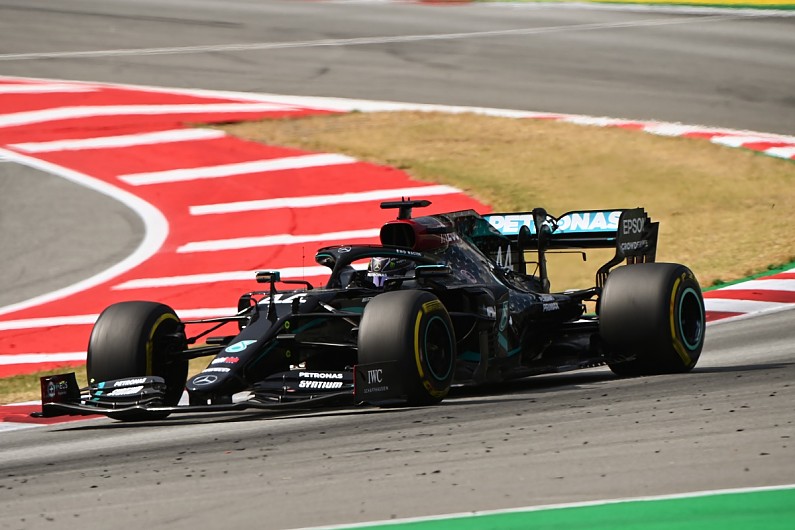
1. Mercedes always learns from its defeats
As has often been the case after any defeat through the V6 hybrid era, Mercedes was left licking its wounds following the 70th Anniversary Grand Prix when tyre management woes allowed Verstappen to grab a surprise win. And as also often been the case following said licking of wounds, Mercedes bounced back in emphatic style with a crushing victory.
Team principal Toto Wolff had talked up Verstappen’s chances going into the Spanish Grand Prix after the Red Bull driver impressed on his long runs through practice on Friday, a summation matching that of Autosport Grand Prix Editor Alex Kalinauckas after his FP2 number-crunching.
PLUS: Why F1 may get another Mercedes/Red Bull showdown in Spain
Track temperatures swelled to 50ºC for the start, and when Verstappen got the jump on Valtteri Bottas to leave Hamilton defenceless, there seem a real chance he could put on pressure for a second straight win. This time though, Hamilton had plenty in hand.
After keeping Verstappen at an arm’s length in the early stages, he turned the screw from around lap 10 onwards to forge a lead that would prove insurmountable. There was not a single complaint about tyres, no “tyres are gone!” call to Pete Bonnington on the pitwall.
“I’m so proud of the team and the engineers that have recovered this weakness of ours,” Wolff said after the race.
“It shows the strength of the organisation, we have come back with some pain after Silverstone, and Sunday evening, the work started to overcome that problem.
“Today we had the same 50 degrees tarmac temperature, and the car was very good. That is actually the thing that makes me the most proud, the strength in the depth of the organisation.”

2. Hamilton breaks Schumacher’s record in Senna-esque fashion
Much of the focus heading into 2020 has been on whether Hamilton can reach two of Michael Schumacher’s long-standing records, once thought to be unbreakable. The win marked the 88th victory of Hamilton’s career, putting him just three shy of Schumacher’s tally of 91, which will surely fall by the end of the season.
The victory also propelled Hamilton into a 37-point lead at the head of the championship, which would mark a record-equalling seventh crown. But another of Schumacher’s records was toppled on Sunday in Barcelona as Hamilton became F1’s all-time podium record holder, standing on the rostrum for the 156th time in his career.
PLUS: Why Hamilton’s legacy already outweighs Schumacher’s
Hamilton said he felt “humbled and honoured” to reach such a landmark after the race, claiming an accolade that had belonged to Schumacher since he outstripped Alain Prost at the 2002 British Grand Prix. Schumacher’s final podium came for Mercedes at the 2012 European Grand Prix in Valencia. Yet it was another F1 great Hamilton seemed to channel in his serene victory on Sunday.
Hamilton said he felt “in a daze” at points in the car, not even registering that he was on the final lap of the race as he crossed the line for victory. They were quotes reminiscent of Ayrton Senna, who discussed feeling an out-of-body experience during qualifying for the 1988 Monaco Grand Prix. But Hamilton later stressed it was not such an ethereal occurrence that had taken place in Barcelona.
“It’s not an out of body experience,” Hamilton clarified after the race. “I just think [I was] in my highest form. I always like to talk about trying to be our highest selves, and each of us has I guess, an unlimited capacity, and it just felt like I was at a high plane.”
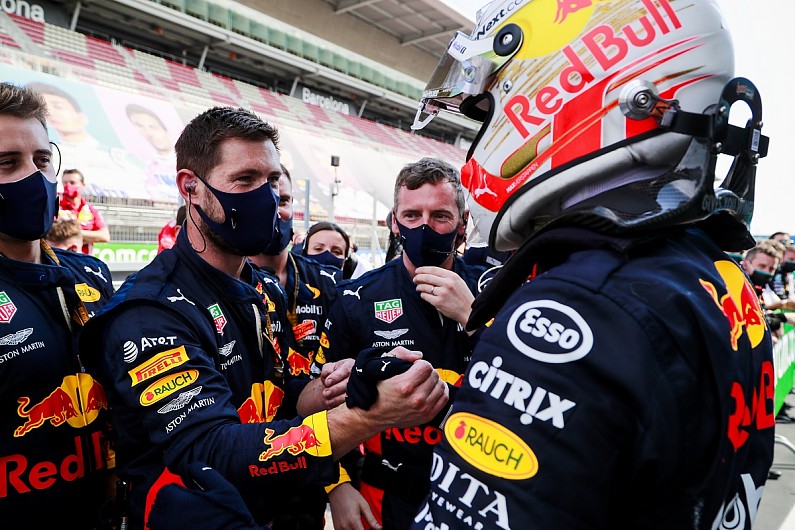
3. Verstappen punches above his weight once again
Given the inherent pace advantage of the Mercedes W11, Verstappen should not be finishing a race any higher than third. But for the fourth race running in Spain on Sunday, that is precisely what he did, again splitting the Mercedes drivers.
The groundwork for Verstappen’s charge to second was laid at the start, when he ducked into Hamilton’s tow and managed to vault past the sluggish Bottas. Although he was unable to keep pace with Hamilton through the first stint, and had to negotiate some radio consternation with his engineer Gianpiero Lambiase, Verstappen always seemed to have enough in hand to keep Bottas at bay.
Verstappen did not show a shred of frustration after the race, instead seeming genuinely happy and content with second place. Red Bull evidently lacked the tyre advantage that had put him on course to his unlikely Silverstone win, making any defeat of a Mercedes car a considerable achievement.
He may be 37 points back from Hamilton in the points standings and, realistically, stand only a slim chance of getting into the title fight, but Verstappen is helping to keep things interesting at the top – a role that really should be filled by Bottas, as we will shortly come on to.
So who has been the better driver so far this season: Hamilton or Verstappen?
“There is very little to choose between them,” said Red Bull team boss Christian Horner.
“I’m hopeful that in the coming races, we see the two of them go head to head, because I think that’s what the viewers would love to see, it’s what the teams would love to see, and I think it would be good for Formula 1.”
We can but hope we get treated to such a battle, because based on Sunday’s race, even the talent of Verstappen isn’t enough to bridge the current performance gap at the front.
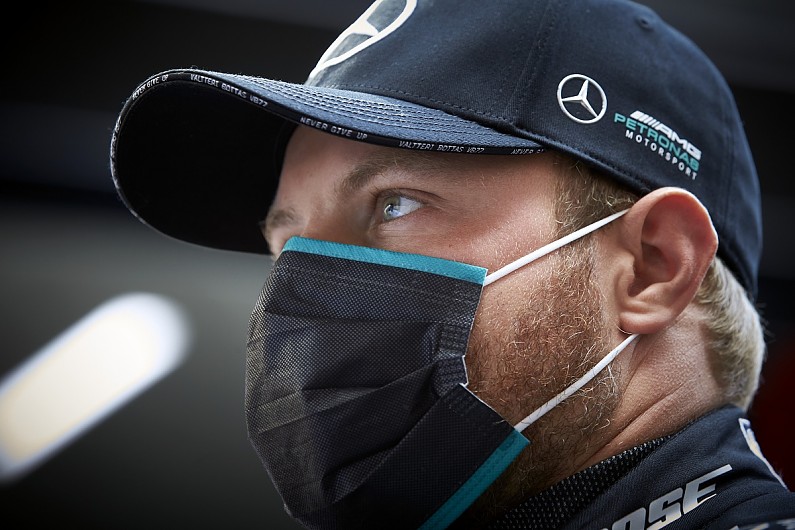
4. Bottas’ championship bid is already hanging by a thread
For all of the talk of ‘Bottas 3.0’ or whatever version he is onto by now, the Finn proved again in Spain why he is not currently capable of taking the fight to Hamilton in the title race.
Starts have been a weakness for Bottas so far this year. His error off the line in Hungary ultimately resigned him to defeat to Verstappen in the race for second, and a familiar story played out again on Sunday in Spain. Bottas failed to get a tow on the run down to Turn 1, allowing Verstappen to move ahead before Racing Point’s Lance Stroll muscled his way into third place.
While Bottas was able to clear Stroll within five laps, it was enough time for both Verstappen and Hamilton to pull enough of a gap that the second Mercedes was never really a threat to either of them. Even a decision to switch to soft tyres for the final stint wasn’t enough to close on Verstappen, prompting Mercedes to take a third stop late on to be sure of the fastest lap bonus point.
Bottas was frank in his assessment after the race, admitting he could already see the 2020 title “drifting away”. He sits third in the standings, 43 points back from his team-mate – who he has not beaten since the opening race of the season.
PLUS: The bleak reality for those trying to topple Hamilton inside Mercedes
Beating Hamilton requires running as close to perfect as you can week in, week out. Right now, Bottas simply isn’t doing that. And it’s a tide that shows very little sign of turning.
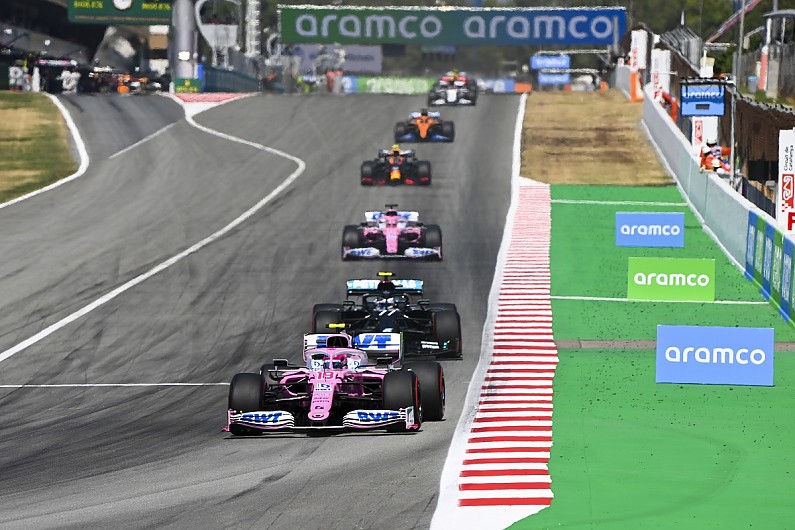
5. Stroll is one of F1 2020’s unsung heroes
As Bottas found himself being squeezed out by a pink Racing Point car into Turn 1 on Sunday, it would have come as a surprise to some that it was Lance Stroll and not Sergio Perez who was being so aggressive. But it should not.
Not only has Stroll proven himself to be a superb starter through his F1 career to date – even if from lowly grid positions – but he has been one of the unsung heroes of the 2020 season to date.
The pace of Racing Point’s controversial RP20 car has certainly helped Stroll’s elevation to fifth place in the drivers’ championship, but he was a close match for returning team-mate Perez right the way through the Spanish Grand Prix weekend.
Stroll qualified fifth, just one-tenth of a second off Perez, and ran third in the early stages after his lightning getaway. The decision to two-stop him cost him a place on the road to the one-stopping Perez, but that was recovered in the final classification after the stewards handed Perez a five-second time penalty for failing to obey blue flags.
It was another fuss-free, mature display for Stroll, who in his fourth season on the F1 grid is removing doubts that may linger over his worthiness of a place in the field. He deserves a lot of credit for that.
It was noted that Stroll was having a close chat with Ferrari’s Sebastian Vettel after the race, only adding to the suggestions they could become team-mates for 2021 when Racing Point becomes Aston Martin. On Stroll’s current form, it’s hard to argue that he would be completely out of place going toe-to-toe with a four-time world champion.
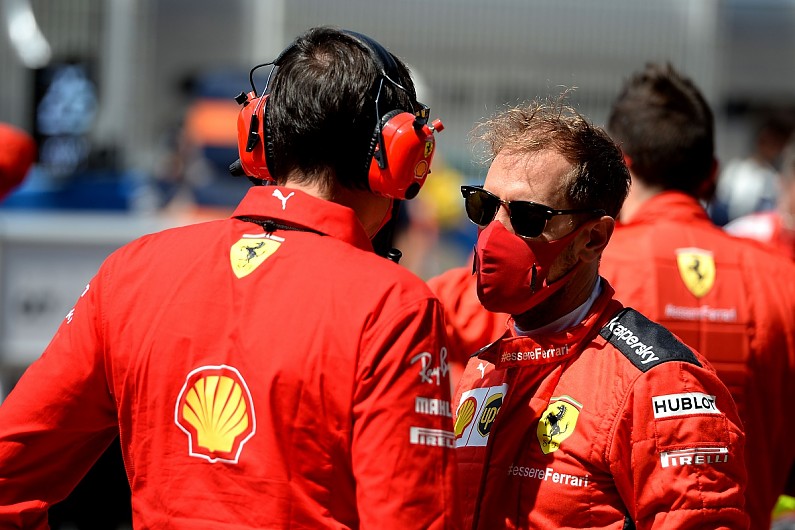
6. There is a clear disconnect between Vettel and Ferrari
The divorce between Vettel and Ferrari has long been finalised, but as they come to split up their belongings and get through one final season for the sake of the kids, things are getting messy.
But first, the positive: Vettel produced his best display of the season to date as he made an ambitious, seemingly impossible one-stop strategy work to go from sitting 12th after stopping to taking seventh at the line. The fashion in which both he and Ferrari got there, though, was complicated.
The plan was always to run a two-stop strategy, with Ferrari putting Vettel onto a set of soft tyres for his second stint after starting on mediums. He spent the early part of the race keeping AlphaTauri’s Daniil Kvyat at bay, only to lose a position on the undercut.
Vettel got some clear air after the cars ahead pitted a second time and began to push, only to be asked if he wanted to consider going to the end of the race on his current set of softs, with the data showing lower levels of degradation.
“Ah for f**k’s sake,” snapped Vettel. “I asked you this before, now I’ve been pushing for three laps.”
He then asked his engineer to crunch the numbers and work out a target lap time for him to get to the end without stopping, something he ultimately made work.
Vettel stressed after the race there was no need for Ferrari to review its strategy planning or communications, but the tension between the car and the pit wall was audible to everyone for the second race in a row.
The strategy call may have paid off this time, but there is clearly a disconnect between Vettel and Ferrari right now. And that’s unlikely to be doing much for his confidence levels.
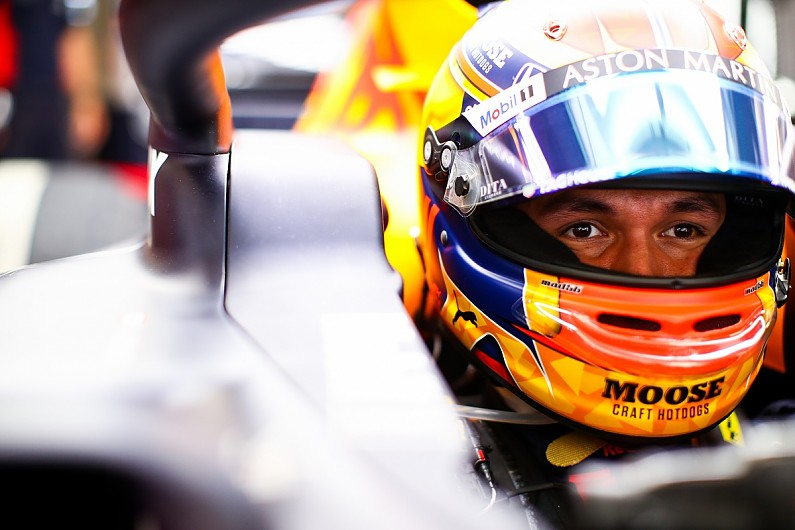
7. Jury still out on Albon progress
The question marks surrounding Alexander Albon are, despite all of the encouraging messages coming out of Red Bull, refusing to go away. Qualifying was better this time around for Albon, who took sixth on the grid, albeit still seven-tenths of as second back from Verstappen in the sister Red Bull RB16.
Given race pace has been his huge strength so far this season, it was a good opportunity for him to try and take a step towards his team-mate and at least win the midfield battle. But Albon never got the chance.
He failed to get close to the Racing Points ahead in the opening stages, and slowly slipped back from both Stroll and Perez as the first stint wore on. Red Bull then opted to bring Albon in early, at the end of lap 16, to take a set of hard compound tyres.
The tyre did little to instil confidence in any team through the weekend – it completed fewer laps than either the longest soft or medium stints in the race – which, combined with traffic, meant Albon’s times took a hit.
Even when Albon got onto mediums for his third stint, he struggled to keep them alive. That allowed Sainz to get the jump on the Red Bull, and for one-stopping Vettel to also stay ahead in the final stages, Albon heading up a frustrated train of cars stuck behind the Ferrari.
“I didn’t have any tyres on each stint,” Albon said. “I don’t know what it is, but it’s the opposite of Silverstone. It was a bit like qualifying, but just more, really struggling to keep the tyres alive.”
Albon still can’t put his finger on what the problem is. And there’s only so many ‘recovery drives’ one can talk up before you have to question why he is having to make a recovery in the first place.
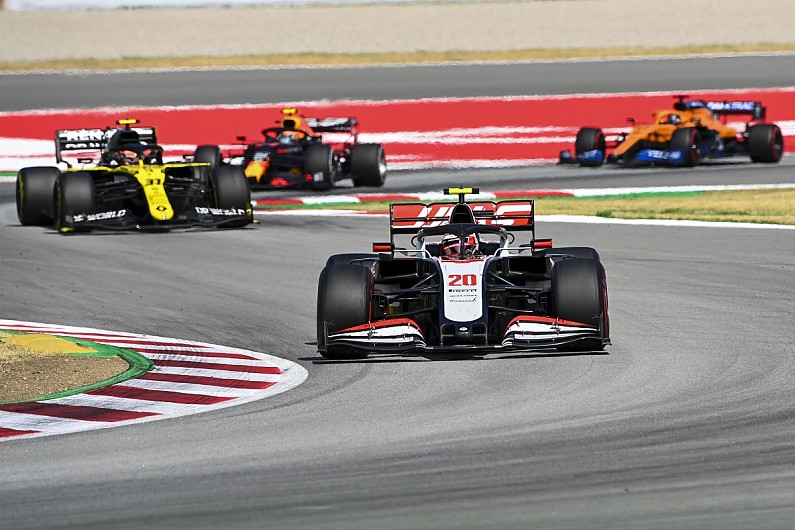
8. Barcelona still isn’t a good track for modern F1 cars
The Spanish Grand Prix rarely registers as hosting thrilling or exciting races, such is the difficulty of overtaking around the Circuit de Barcelona-Catalunya. And the 2020 edition was no different.
We thought we’d seen the last of the track in 2019, only for F1 to strike a late deal to keep the circuit on the calendar for this season, which will now carry over to next year by virtue of the revised contracts in the wake of the pandemic.
That means we’re probably set for at least one more rather underwhelming, forgettable affair, because the track simply isn’t any good for modern F1 cars.
Even in the extreme August heat that some thought could spice things up, drivers were left managing their cars early on, trying to stay out of the wake of the cars ahead. It’s hard to follow in Barcelona. We know that. And hopefully that will be remedied by the new cars coming in 2022.
But to have points in the race where no car was within a second of any other is a pretty damning reflection of the track’s suitability to the current formula.

9. The FIA is serious about stopping car copying
The hullabaloo over Racing Point’s brake ducts petered out a little in Barcelona – even if the potshots between team principals continued – but there was at last clarity over the future direction the FIA wanted F1 to go in.
In a letter sent by the FIA’s secretary general for motorsport Peter Bayer to all teams ahead of the Spanish Grand Prix weekend, it was confirmed there would be a firm clampdown on car copying from 2021.
The move had been discussed by the FIA’s head of single-seater matters, Nikolas Tombazis, one week earlier at Silverstone, but the arrival of an official communication made clear just how seriously the sport’s governing body is taking the matter.
Bayer told teams the updated rules would “expressly prevent teams from using photography or other reverse engineering techniques to copy large parts of other teams’ cars”, thereby outlawing Racing Point’s approach to copying last year’s title-winning Mercedes W10 car.
The assurances given by the FIA to teams on the matter were enough to prompt McLaren and Williams to withdraw their appeals against the Racing Point sanction, with their fears being sufficiently allayed.
Renault and Ferrari will continue with their appeals however, taking it to the FIA’s International Court of Appeal.
It is good news for those keen to see F1 remain a sport for independent constructors – but could yet open a can of worms over what is and is not deemed to be “copying”.
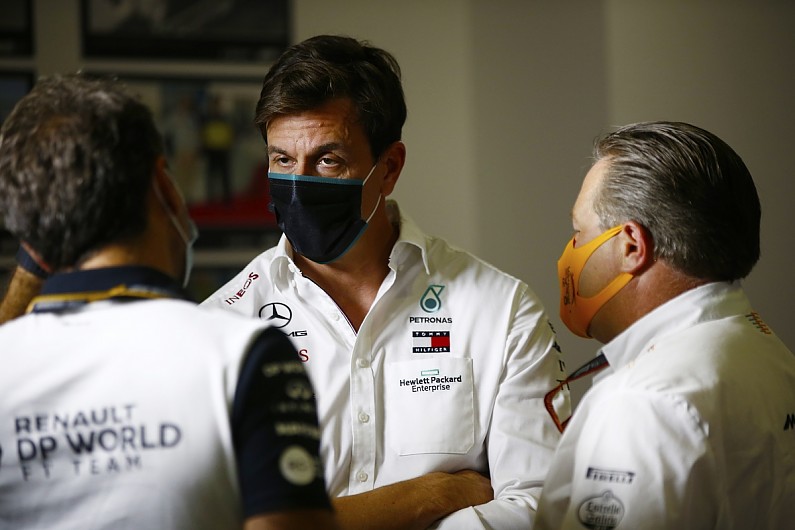
10. Toto Wolff’s future remains an open question
All eyes may be on Hamilton as he comes to finalise a new contract with Mercedes beyond the end of the year, but its team principal is increasingly becoming a focal point too.
Wolff is also out of contract at the end of the year, and has previously said he would be considering what kind of role he wanted to retain with Mercedes moving forward.
The suggestion has been he could take a more senior role that would see the day-to-day running of the team be handed over to someone else, with Wolff no longer attending every single race.
Wolff gave some of his most honest thoughts on his future over the Spanish Grand Prix weekend. He said the challenge of the sport “takes a toll” with so much travelling, but added there was “no reason not to continue with Mercedes”.
“We will find out in which role,” he said.
Talks are set to continue between Wolff and Mercedes CEO Ola Kallenius about the matter. Wolff also said he was consulting his wife, Susie, with family matters certainly being a consideration.
“I think you need to listen to yourself, which is not always easy,” Wolff said.
“I can set up a car more easily than to set up myself. It’s where Formula 1 is going. It’s to take the right decision for the team, which is my highest priority.
“I’m discussing every millimetre with Ola Kallenius and with Susie, and hopefully I’ll be in the same space next year and discuss with you all. If not, I’ll be staying close to the team.”
